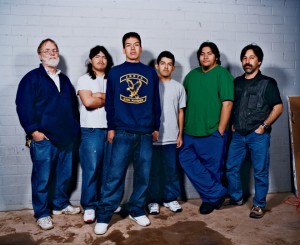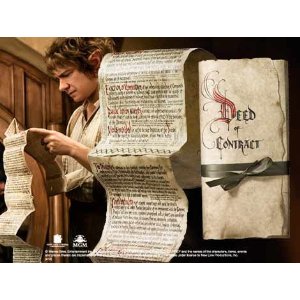 The employees of the US embassy in Iran were taken hostage in 1979, but six escaped and were hidden by the Canadian ambassador and his wife. A CIA “exfiltration” expert worked with the Canadian government and some Hollywood talent to create fake identities as members of a Canadian film crew scouting locations for the six Americans. The story was classified for many years (the CIA agent even had to give back his medal), but it is now public. This week, Ben Affleck directs and stars in “Argo,” based on the rescue mission. Affleck and the real-life former spook, Tony Mendez, were interviewed by Entertainment Weekly.
The employees of the US embassy in Iran were taken hostage in 1979, but six escaped and were hidden by the Canadian ambassador and his wife. A CIA “exfiltration” expert worked with the Canadian government and some Hollywood talent to create fake identities as members of a Canadian film crew scouting locations for the six Americans. The story was classified for many years (the CIA agent even had to give back his medal), but it is now public. This week, Ben Affleck directs and stars in “Argo,” based on the rescue mission. Affleck and the real-life former spook, Tony Mendez, were interviewed by Entertainment Weekly.
“I’ve spent my whole life trying to be boring,” Mendez said. “As an operative, you don’t want to be caught on camera. And here I am watching Ben on a big screen saying, ‘My name is Tony Mendez.’ That really is weird….The movie is so well-done that I felt exactly like I was back there.” You can catch the “boring” Mendez in the movie if you look carefully.
The story first came to light in a Wired Magazine article in 2007. As the movie acknowledges in its conclusion, there were some dramatic liberties taken with the facts. But the most outlandish aspects of the story really happened. Mendez had worked with Hollywood experts before on make-up and disguises, so he had some contacts. Mendez, using the name Kevin Harkin, really did set up a film production company that could credibly be scouting locations for a wild sci-fi/fantasy film.
In just four days, Mendez, Chambers, and Sidell created a fake Hollywood production company. They designed business cards and concocted identities for the six members of the location-scouting party, including all their former credits. The production company’s offices would be set up in a suite at Sunset Gower Studios on what was formerly the Columbia lot, in a space vacated by Michael Douglas after he finished The China Syndrome.
All they needed now was a film — and Chambers had the perfect script. Months before, he had received a call from a would-be producer named Barry Geller. Geller had purchased the rights to Roger Zelazny’s science fiction novel, Lord of Light, written his own treatment, raised a few million dollars in starting capital from wealthy investors, and hired Jack Kirby, the famous comic book artist who cocreated X-Men, to do concept drawings. Along the way, Geller imagined a Colorado theme park based on Kirby’s set designs that would be called Science Fiction Land; it would include a 300-foot-tall Ferris wheel, voice-operated mag-lev cars, a “planetary control room” staffed by robots, and a heated dome almost twice as tall as the Empire State Building. Geller had announced his grand plan in November at a press conference attended by Jack Kirby, former football star and prospective cast member Rosey Grier, and several people dressed like visitors from the future. Shortly thereafter, Geller’s second-in-command was arrested for embezzling production funds, and the Lord of Light film project evaporated.
Since Chambers had been hired by Geller to do makeup for the film, he still had the script and drawings at his house. The story, a tale of Hindu-inspired mystical science fiction, took place on a colonized planet. Iran’s landscape could provide many of the rugged settings required by the script. A famous underground bazaar in Tehran even matched one of the necessary locations. “This is perfect,” Mendez said. He removed the cover and gave the script a new name, Argo — like the vessel used by Jason on his daring voyage across the world to retrieve the Golden Fleece.
The new production company outfitted its office with phone lines, typewriters, film posters and canisters, and a sign on the door: studio six productions, named for the six Americans awaiting rescue. Sidell read the script and sketched out a schedule for a month’s worth of shooting. Mendez and Chambers designed a full-page ad for the film and bought space in Variety and The Hollywood Reporter. The night before Mendez returned to Washington, Studio Six threw a small party at the Brown Derby, where they toasted their “production” and Mendez grabbed some matchbooks as additional props to boost his Hollywood bona fides. Shortly thereafter, the Argo ads appeared, announcing that principal photography would commence in March. The film’s title was rendered in distressed lettering against a black background. Next to it was a bullet hole. Below it was the tagline “A Cosmic Conflagration.”
New Yorkers can see some of the actual artifacts from what was called “The Canadian Caper” on display at Discovery Times Square, including the script for the fake movie. One of the State Department officials who was rescued wrote about what the movie gets right and wrong in Slate. My favorite footnote: in an interview with Joshuah Bearman, the reporter who wrote the first story about the declassified details, he says that the fake “Studio 6” production company set up by Mendez and named for the six Americans they were trying to rescue actually received 26 scripts, including one from Steven Spielberg!




